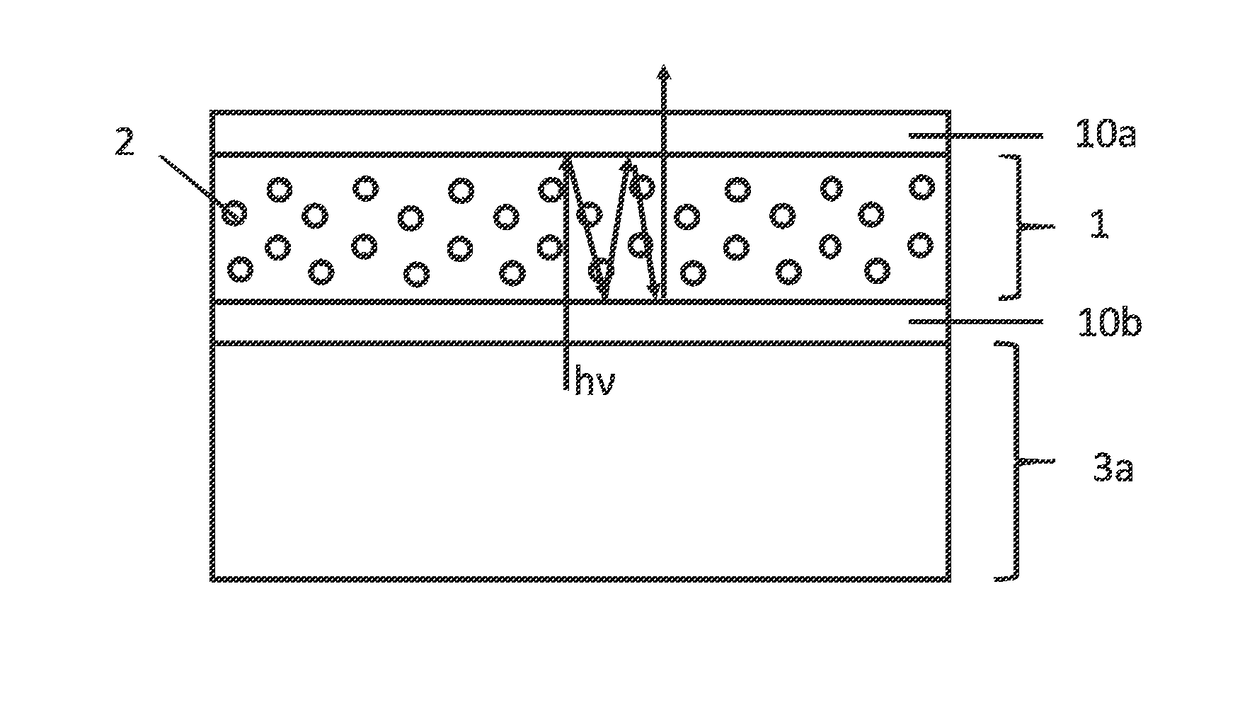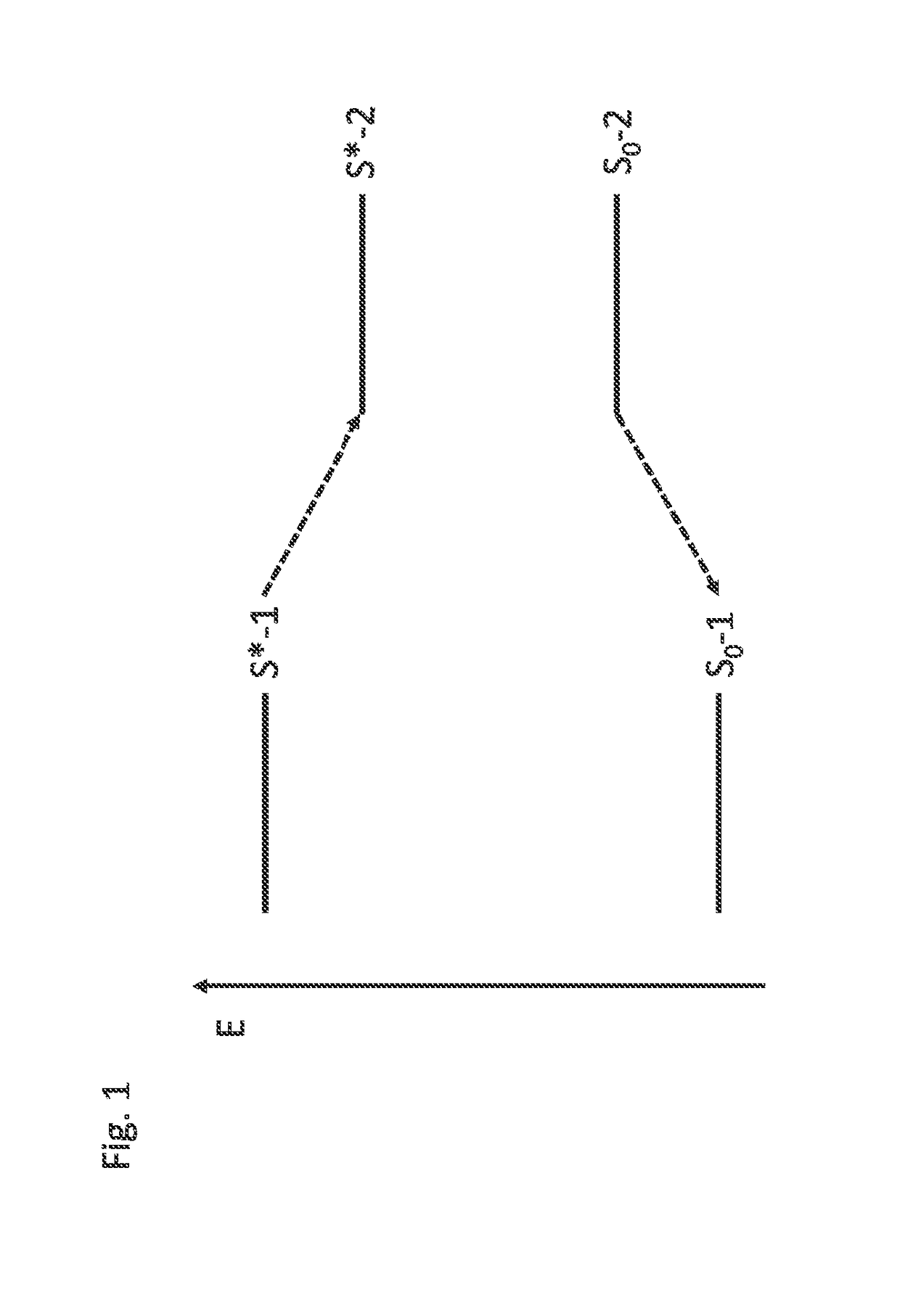Optoelectronic device, use of a dual emitter as wavelength conversion material
a technology of optical equipment and wavelength conversion material, which is applied in the direction of light and heating equipment, organic chemistry, spectral modifiers, etc., can solve the problems of reducing the efficiency of wavelength conversion and achieve the effect of higher luminous efficacy
- Summary
- Abstract
- Description
- Claims
- Application Information
AI Technical Summary
Benefits of technology
Problems solved by technology
Method used
Image
Examples
Embodiment Construction
[0162]FIG. 1 shows the energy level diagram for a dual emitter, wherein E denotes the energy of the electronic states. Absorption of a photon induces an electronic transition from the first electronic base state (So-1) into the first electronically excited state (S*-1). A transition from the first electronically excited state (S*-1) into the second electronically excited state (S*-2) then occurs. This transition may proceed, for example, by means of intramolecular charge transfer or intramolecular proton transfer. The dual emitter is in principle capable of emitting radiation from both electronically excited states. If the transition proceeding from the first electronically excited state (S*-1) into the second electronically excited state (S*-2) proceeds faster than the radiant transition from the first electronically excited state (S*-1) into the first electronic base state (So-1), emission may mainly proceed from the second electronically excited state (S*-2). Since the reverse re...
PUM
| Property | Measurement | Unit |
|---|---|---|
| molecular weight | aaaaa | aaaaa |
| thickness | aaaaa | aaaaa |
| thickness | aaaaa | aaaaa |
Abstract
Description
Claims
Application Information
 Login to View More
Login to View More - R&D
- Intellectual Property
- Life Sciences
- Materials
- Tech Scout
- Unparalleled Data Quality
- Higher Quality Content
- 60% Fewer Hallucinations
Browse by: Latest US Patents, China's latest patents, Technical Efficacy Thesaurus, Application Domain, Technology Topic, Popular Technical Reports.
© 2025 PatSnap. All rights reserved.Legal|Privacy policy|Modern Slavery Act Transparency Statement|Sitemap|About US| Contact US: help@patsnap.com



